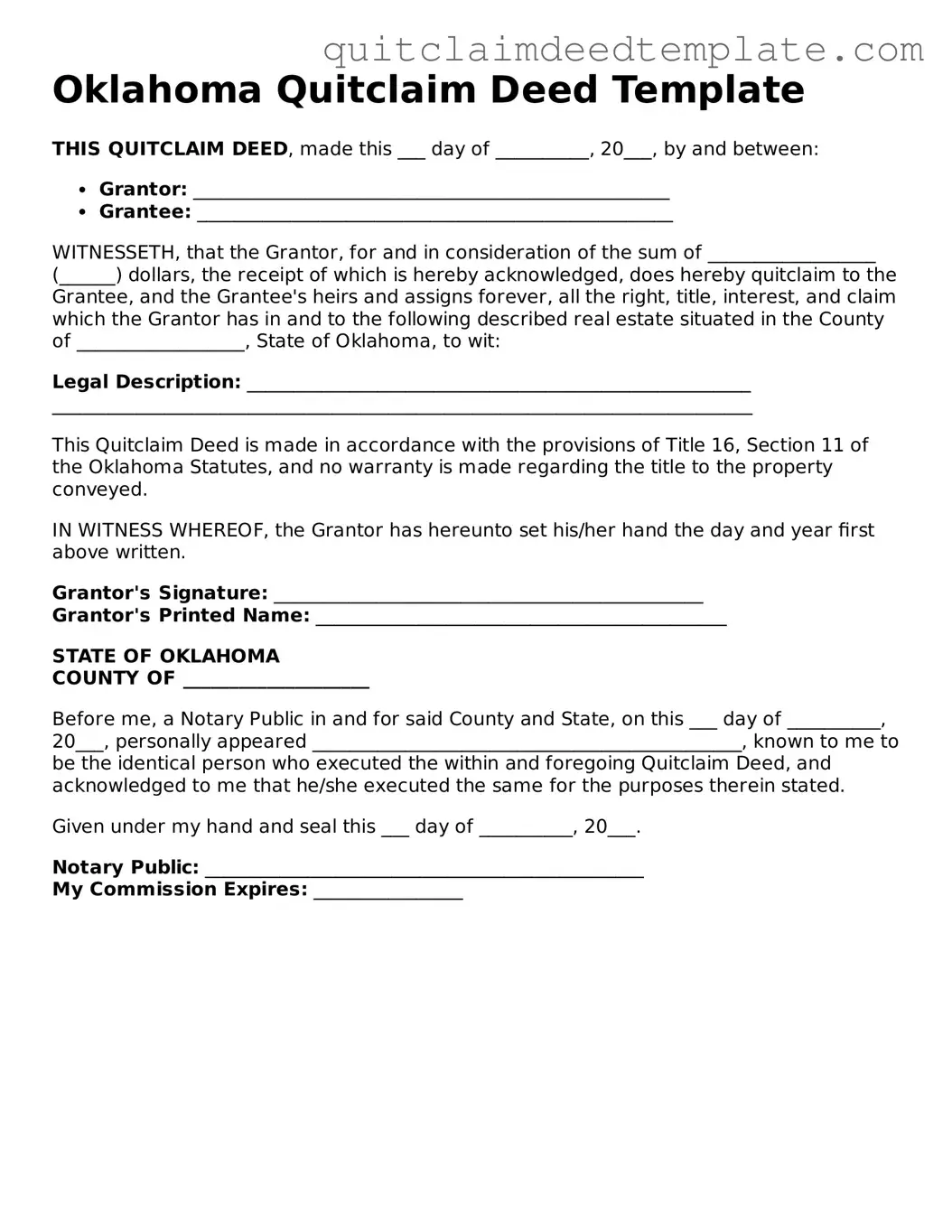Documents used along the form
When dealing with property transfers in Oklahoma, the Quitclaim Deed is a commonly used document. However, it is often accompanied by other forms and documents that help ensure the process is smooth and legally sound. Below is a list of important documents that may be required or beneficial when executing a Quitclaim Deed.
- Property Title Search: This document provides a history of the property’s ownership. It helps verify that the seller has the legal right to transfer the property and that there are no liens or claims against it.
- Affidavit of Title: This is a sworn statement by the seller affirming their ownership of the property and confirming that there are no outstanding claims or liens. It adds an extra layer of protection for the buyer.
- Real Estate Purchase Agreement: This contract outlines the terms of the sale, including the purchase price and any contingencies. It serves as a foundation for the transaction before the Quitclaim Deed is executed.
- Seller’s Disclosure Statement: This document requires the seller to disclose any known issues with the property, such as structural problems or environmental hazards. It is vital for the buyer to make an informed decision.
- IRS Form 1099-S: This form is used to report the sale of real estate to the IRS. It ensures that any capital gains taxes are properly accounted for during the transaction.
- Warranty Deed: While not always used with a Quitclaim Deed, a Warranty Deed provides a guarantee from the seller that they hold clear title to the property. This can offer additional security to the buyer.
- Title Insurance Policy: This insurance protects the buyer against any future claims or disputes regarding the property title. It is often recommended to safeguard the investment.
- Notice of Completion: In some cases, this document is filed to confirm that any necessary improvements or repairs have been completed on the property. It can help clarify the condition of the property at the time of sale.
- Property Tax Statements: These statements provide information on the current tax status of the property. Buyers should review these to understand their potential tax obligations after the transfer.
Understanding these documents and their purposes can greatly assist in navigating the complexities of property transactions. Each one plays a crucial role in ensuring that the transfer of property is conducted legally and transparently, protecting the interests of all parties involved.
